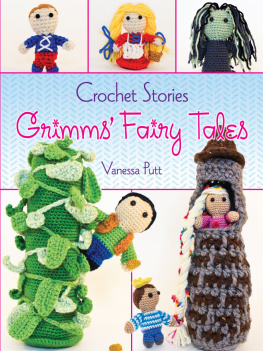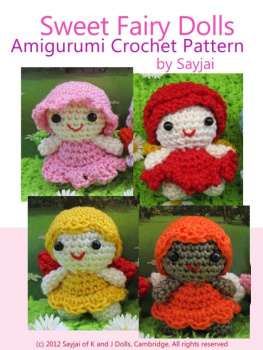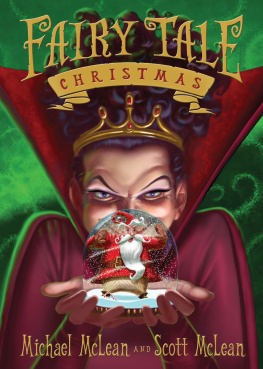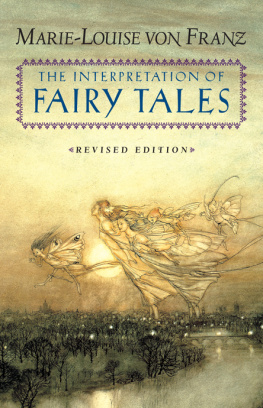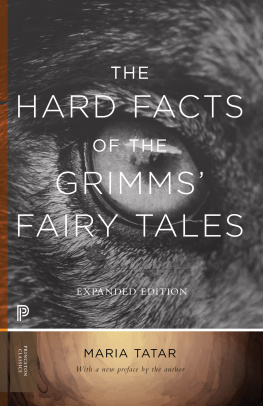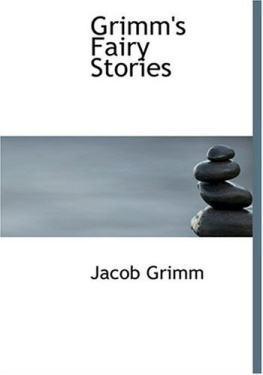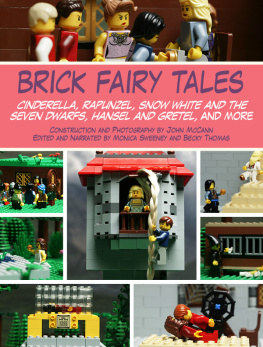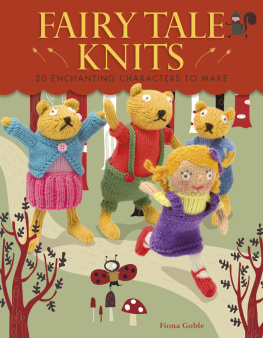Crochet Stories
Grimms Fairy Tales
Vanessa Putt
Photography by
Gloria Cavallaro
Dover Publications, Inc.
Mineola, New York
Copyright
Copyright 2016 by Vanessa Putt
All rights reserved.
Bibliographical Note
Crochet Stories: Grimms Fairy Tales is a new work, first published by Dover Publications, Inc., in 2016. The fairy tale story texts are taken from standard editions.
International Standard Book Number
eISBN-13: 978-0-486-81048-5
Manufactured in the United States by RR Donnelley
79461X01 2016
www.doverpublications.com
General Notes, Tips, and Abbreviations
Working in the Round
Most of the patterns in this book are worked in the round. A couple are worked in a continuous spiral, but most are worked in joined, separate rounds. Either way they are worked, you will want to use a removable stitch marker to mark the first stitch of every round to keep track of where youre beginning. Sl sts and ch 1 sts, to complete and start rounds/rows, do not count as sts and do not factor into st counts for the rounds or rows.
Stuffing
Polyfil stuffing is used for the projects in this book. Some pieces, such as the gingerbread house, the tower, and the beanstalk, will stand up better with some weight added to the bottom. When you stuff, add dried beans, rice, or pennies in the bottom of the piece, and then fill in the remainder with stuffing. Caution: Items with added weight, and/or small pieces, in the bottom are not suitable for children under 3 years old and should not be used.
Gauge and Measurements
Gauge is not critical when making amigurumi. Yarn recommendations and hook sizes are given, but the most important thing is to work the pieces tightly enough so that the fabric is solid and the stuffing doesnt show through. This is why a smaller hook is used than what would normally be used with the yarn.
Differences in the overall measurements can occur, depending on how tightly or loosely the crocheter works, as well as on which yarn is chosen. Even yarns within the same weight category can yield different gauges and measurements overall. Super Saver Economy by Red Heart is slightly on the heavier side of worsted weight, and Deborah Norville Collection Everyday Soft Worsted Solids by Premier Yarns is slightly on the lighter side of worsted weight. This means that even though Jack and the Prince are both the same pattern and are both worked in worsted weight, the overall measurements are different.
Using a different weight of yarn is the easiest way to change the size of your characters. The Giant is worked in the same basic person pattern as the rest of the characters, but since hes worked in a super bulky yarn, hes much bigger than the rest. Alternately, the same pattern worked in a fingering weight yarn will create a mini version of the characters in this book.
Finishing
Details for Making Your Character Special
The differences are in the details! Its the little things, like embroidery, faces, and hair, that will make your characters unique. Instead of adhering exactly to the patterns in this book, try changing the shapes and colors of the details to make the characters yours.
Some items, such as safety eyes, have to be added before you stuff and finish the piece, but I prefer to do as much of the sewing and embroidery as possible after the piece is stuffed and finished. If you feel more comfortable adding details before finishing, it is possible to do this. It also can be easier to add the details after, as the shape of the piece can change between crocheting and stuffing. I find it much simpler to add the details after characters are as final as possiblethat way it is very easy to judge where youre placing the details.
The instructions are written so that the arms are sewn on after the body is finished and stuffed, but this is something that would be very easy to do while youre still crocheting the body.
Faces
I used safety eyes for all of the pieces, but you can just as easily use black yarn or embroidery thread to sew on eyes. You can also find different colors of safety eyes, such as the brown eyes used in the Giant in Jack and the Beanstalk.
I chose not to add facial features beyond the eyes, but you can embroider or paint full faces on your characters. You can also cut the features out of felt or fabric and stitch them on.
Weaving in Ends
As with the embroidery and sewn-on details, I prefer to weave in ends after the piece has been finished and stuffed. Weaving in your ends this way is very easy, and a great way to secure the ends into your piece. To do so, weave back and forth next to where the end isthen insert the yarn needle into your piece and out an opposite side, preferably on the back or underside of the piece. Cut the end close to the piece. Running the end through the stuffing will help to secure the yarn and prevent it from coming out.
Abbreviations
approx approximately
beg beginning
ch chain
cm centimeters
dc double crochet
dec(d) decrease(d)
foll following
hdc half double crochet
hdc2tog half double crochet 2 stitches together
inc increase
m meter(s)
mm millimeter(s)
oz ounce(s)
rem remain(s)(ing)
rep repeat
rnd round
RS right side
sc single crochet
sc2tog single crochet 2 stitches together
sk skip
sl slip
st(s) stitch(es)
tog together
tr treble crochet
WS wrong side
* repeat directions following *
[ ] repeat directions inside brackets
Basic Person Pattern
SKILL LEVEL
Easy
Things youll need:
THE YARN
Super Saver Economy by Red Heart, 7oz/198g skeins, each approx 364yds/333m
* 1 skein in #313 Aran
Note This is what was used for this particular example, but you can use any worsted weight yarn, the same size hook, and any color for this pattern.
THE HOOK
Size G/6 (4mm) crochet hook
ADDITIONAL MATERIALS
Yarn needle
Polyfil stuffing
2 black safety eyes 6mm
MEASUREMENTS
Height 5/13.5cm
GAUGE
Gauge is not critical.
BASIC PERSON
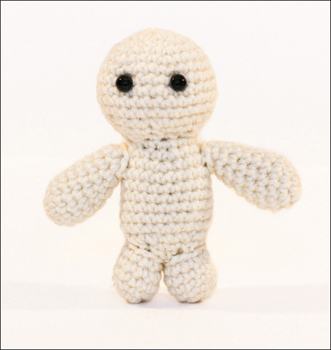
Head
Ch 3, join with sl st to form ring.
Rnd 1: Ch 1, sc 6 into ring, sl st in beg ch.
Inc rnd 2: Ch 1, 2 sc in each st around, sl st in first sc of rnd12 sc.
Inc rnd 3: Ch 1, *2 sc in first st, sc in next st; rep from * around, sl st in first st of rnd18 sc.
Inc rnd 4: Ch 1, *2 sc in first st, sc in next 2 sts; rep from * around, sl st in first st of rnd24 sc.
Inc rnd 5: Ch 1, *2 sc in first st, sc in next 3 sts; rep from * around, sl st in first st of rnd30 sc.
Rnds 611: Ch 1, sc in each st around, sl st in first st of rnd.
Place safety eyes between rnds 7 and 8, 4 sc apart.
Dec rnd 12: Ch 1, *sc2tog, sc in next 3 sts; rep from * around, sl st in first st of rnd24 sc.
Hansel and Gretel
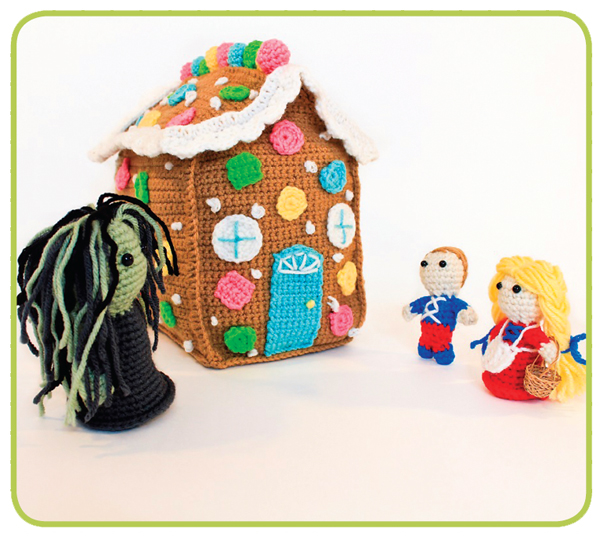
H ard by a great forest dwelt a poor wood-cutter with his wife and his two children. The boy was called Hansel and the girl Gretel. He had little to bite and to break, and once when great dearth fell on the land, he could no longer procure even daily bread. Now when he thought over this by night in his bed, and tossed about in his anxiety, he groaned and said to his wife: What is to become of us? How are we to feed our poor children, when we no longer have anything even for ourselves? Ill tell you what, husband, answered the woman, early tomorrow morning we will take the children out into the forest to where it is the thickest; there we will light a fire for them, and give each of them one more piece of bread, and then we will go to our work and leave them alone. They will not find the way home again, and we shall be rid of them. No, wife, said the man, I will not do that; how can I bear to leave my children alone in the forest?the wild animals would soon come and tear them to pieces. O, you fool! said she, then we must all four die of hunger, you may as well plane the planks for our coffins, and she left him no peace until he consented. But I feel very sorry for the poor children, all the same, said the man.
Next page
